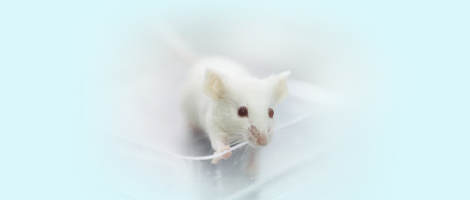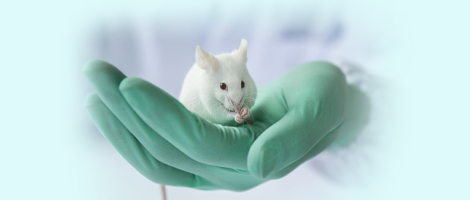| [1] |
SCANZIANI E, GOBBI A, CRIPPA L, et al. Hyperkeratosis-associated coryneform infection in severe combined immunodeficient mice[J]. Lab Anim, 1998, 32(3):330-336. DOI:10.1258/002367798780559239 .
|
| [2] |
KIM T H, KIM D S, HAN J H, et al. Detection of Corynebacterium bovis infection in athymic nude mice from a research animal facility in Korea[J]. J Vet Sci, 2014, 15(4):583-586. DOI:10.4142/jvs.2014.15.4.583 .
|
| [3] |
MANUEL C A, PUGAZHENTHI U, LESZCZYNSKI J K. Surveillance of a ventilated rack system for Corynebacterium bovis by sampling exhaust-air manifolds[J]. J Am Assoc Lab Anim Sci, 2016, 55(1):58-65.
|
| [4] |
RUSSO M, INVERNIZZI A, GOBBI A, et al. Diffuse scaling dermatitis in an athymic nude mouse[J]. Vet Pathol, 2013, 50(4):722-726. DOI:10.1177/0300985812463408 .
|
| [5] |
TAVAKKOL Z, SAMUELSON D, DELANCEY PULCINI E, et al. Resident bacterial flora in the skin of C57BL/6 mice housed under SPF conditions[J]. J Am Assoc Lab Anim Sci, 2010, 49(5):588-591.
|
| [6] |
GOZALO A S, HOFFMANN V J, BRINSTER L R, et al. Spontaneous Staphylococcus xylosus infection in mice deficient in NADPH oxidase and comparison with other laboratory mouse strains[J]. J Am Assoc Lab Anim Sci, 2010, 49(4):480-486.
|
| [7] |
JACKSON S H, GALLIN J I, HOLLAND S M. The p47phox mouse knock-out model of chronic granulomatous disease[J]. J Exp Med, 1995, 182(3):751-758. DOI:10.1084/jem.182.3.751 .
|
| [8] |
PIZZOLLA A, HULTQVIST M, NILSON B, et al. Reactive oxygen species produced by the NADPH oxidase 2 complex in monocytes protect mice from bacterial infections[J]. J Immunol, 2012, 188(10):5003-5011. DOI:10.4049/jimmunol. 1103430 .
|
| [9] |
LAUBACH V E, SHESELY E G, SMITHIES O, et al. Mice lacking inducible nitric oxide synthase are not resistant to lipopolysaccharide-induced death[J]. Proc Natl Acad Sci USA, 1995, 92(23):10688-10692. DOI:10.1073/pnas.92.23.10688 .
|
| [10] |
WON Y S, KWON H J, OH G T, et al. Identification of Staphylococcus xylosus isolated from C57BL/6J-Nos2tm1Lau mice with dermatitis[J]. Microbiol Immunol, 2002, 46(9): 629-632. DOI: 10.1111/j.1348-04212002.tb02744.x .
|
| [11] |
中国实验动物学会. 实验动物 牛棒状杆菌检测方法: T/CALAS 20—2017 [S]. 北京: 科学出版社, 2017.
|
|
Chinese Association for Laboratory Animal Sciences. Laboratory animal–Method for examination ofCoryne-bacterium bovis: T/CALAS 20—2017[S]. Beijing:Science Press, 2017.
|
| [12] |
中国实验动物学会. 实验动物 木糖葡萄球菌检测方法: T/CALAS 92—2020 [S/OL]. [2024-12-30]. .
|
|
Chinese Association for Laboratory Animal Sciences. Laboratory animal–Method for the detection ofStaphyl-ococcus xylosus:T/CALAS 92—2020[S/OL]. [2024-12-30]. .
|
| [13] |
NATSIS N E, COHEN P R. Coagulase-negative Staphylococcus skin and soft tissue infections[J]. Am J Clin Dermatol, 2018, 19(5):671-677. DOI:10.1007/s40257-018-0362-9 .
|
| [14] |
BRADFIELD J F, WAGNER J E, BOIVIN G P, et al. Epizootic fatal dermatitis in athymic nude mice due to Staphylococcus xylosus [J]. Lab Anim Sci, 1993, 43(1):111-113.
|
| [15] |
于灵芝, 冯丽萍, 孔志豪, 等. 木糖葡萄球菌实时荧光定量PCR检测方法的建立及其应用[J]. 中国实验动物学报, 2024, 32(1):73-79. DOI: 10.3969/j.issn.1005-4847.2024.01.010 .
|
|
YU L Z, FENG L P, KONG Z H, et al. Establishment of qPCR method to detect Staphylococcus xylosus and its application[J]. Acta Lab Anim Sci Sin, 2024, 32(1):73-79. DOI: 10.3969/j.issn.1005-4847.2024.01.010 .
|
| [16] |
BATTAGLIA M, GARRETT-SINHA L A. Staphylococcus xylosus and Staphylococcus aureus as commensals and pathogens on murine skin[J]. Lab Anim Res, 2023, 39(1):18. DOI: 10.1186/s42826-023-00169-0 .
|
| [17] |
RESHAMWALA K, CHEUNG G Y C, HSIEH R C, et al. Identification and characterization of the pathogenic potential of phenol-soluble modulin toxins in the mouse commensal Staphylococcus xylosus [J]. Front Immunol, 2022, 13:999201. DOI:10.3389/fimmu.2022.999201 .
|
| [18] |
ACUFF N V, LAGATTA M, NAGY T, et al. Severe dermatitis associated with spontaneous Staphylococcus xylosus infection in Rag -/- Tpl2-/- mice[J]. Comp Med, 2017, 67(4):344-349.
|
| [19] |
LI Z Q, DONG J X, WANG M, et al. Resveratrol ameliorates liver fibrosis induced by nonpathogenic Staphylococcus in BALB/c mice through inhibiting its growth[J]. Mol Med, 2022, 28(1):52. DOI:10.1186/s10020-022-00463-y .
|
| [20] |
QU Q W, CUI W Q, XING X X, et al. Rutin, a natural inhibitor of IGPD protein, partially inhibits biofilm formation in Staphylococcus xylosus ATCC700404 in vitro and in vivo [J]. Front Pharmacol, 2021, 12:728354. DOI:10.3389/fphar.2021. 728354 .
|
| [21] |
EYERICH K, PENNINO D, SCARPONI C, et al. IL-17 in atopic eczema: linking allergen-specific adaptive and microbial-triggered innate immune response[J]. J Allergy Clin Immunol, 2009, 123(1):59-66.e4. DOI:10.1016/j.jaci.2008.10.031 .
|
| [22] |
NIEBUHR M, GATHMANN M, SCHARONOW H, et al. Staphylococcal alpha-toxin is a strong inducer of interleukin-17 in humans[J]. Infect Immun, 2011, 79(4):1615-1622. DOI:10.1128/IAI.00958-10 .
|
| [23] |
KIM Y, LEE Y S, YANG J Y, et al. The resident pathobiont Staphylococcus xylosus in Nfkbiz-deficient skin accelerates spontaneous skin inflammation[J]. Sci Rep, 2017, 7(1):6348. DOI:10.1038/s41598-017-05740-z .
|







 )(
)( ), 于灵芝1(
), 于灵芝1( )(
)( ), 冯丽萍1, 朱琦1, 施国君2, 王晨2
), 冯丽萍1, 朱琦1, 施国君2, 王晨2
 )(
)( ), YU Lingzhi1(
), YU Lingzhi1( )(
)( ), FENG Liping1, ZHU Qi1, SHI Guojun2, WANG Chen2
), FENG Liping1, ZHU Qi1, SHI Guojun2, WANG Chen2